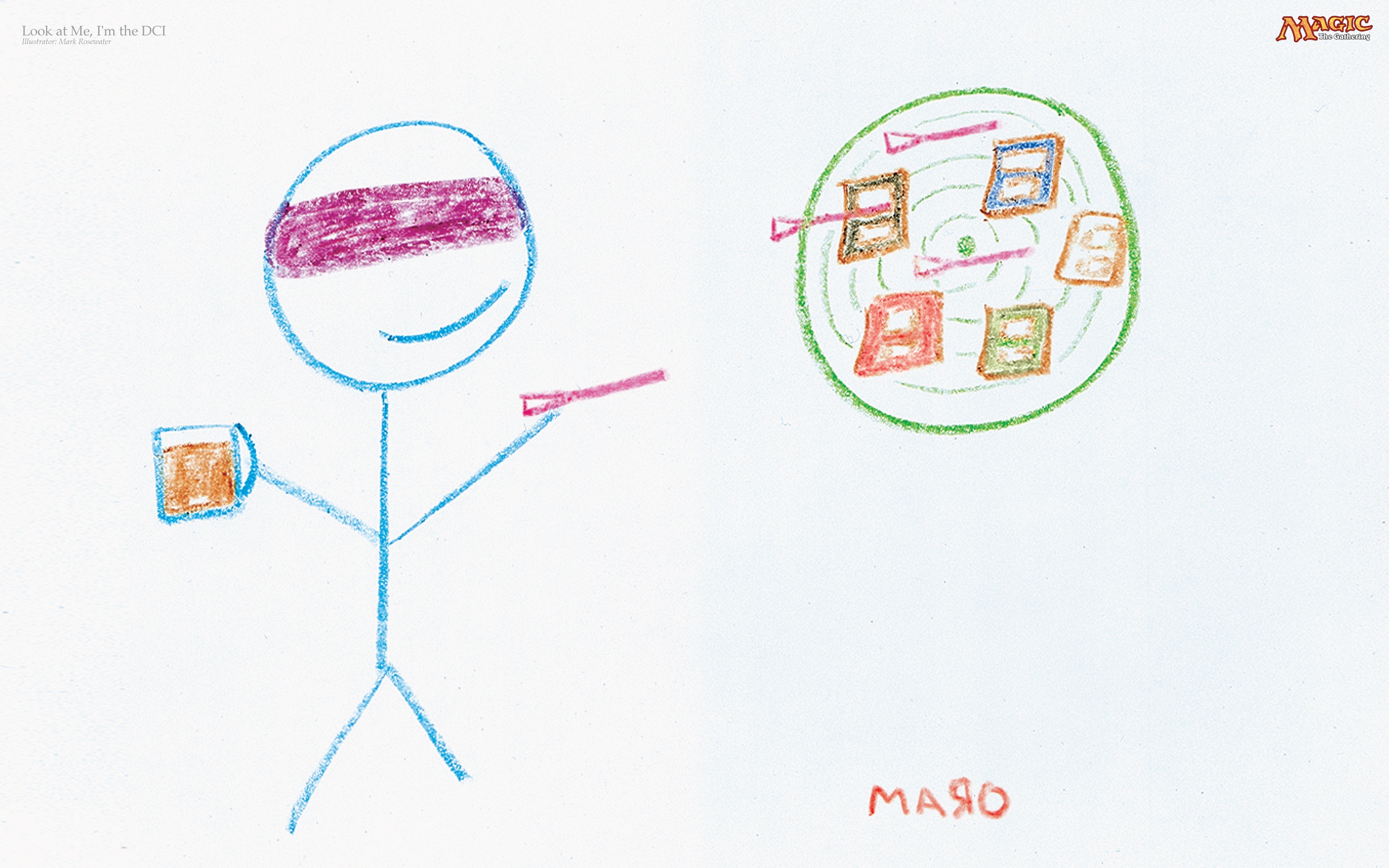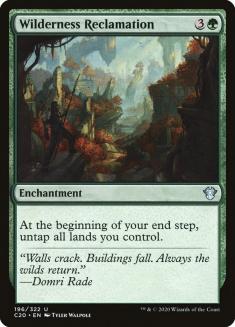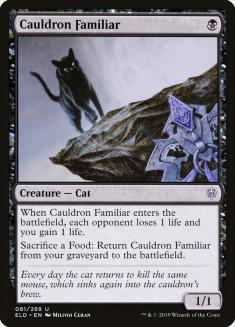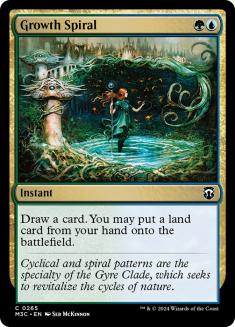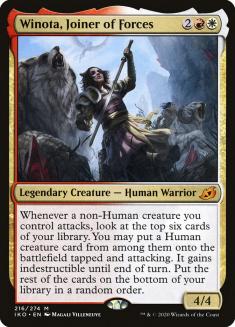On August 3rd, Wizards of the Coast published the biggest Banned and Restricted announcement I can remember, removing several of the top decks across multiple formats. In today’s article, I will distill what’s going to happen to the Standard format after the bans and figure out which decks are now the best-positioned.

Whenever we have a ban announcement, there are usually three different types of decks that are affected:
- Decks that are now dead or severely harmed.
- Decks that used to be good and are unchanged (or almost unchanged).
- Decks that were dead and now have a new shot at life.
1. Decks that are now dead or severely harmed.
These are usually the previous top decks in the format; otherwise the bans wouldn’t make much sense. Sometimes a deck can be banned out and still remain a very powerful choice, but for this batch of Standard bans that’s unlikely to be the case.
In Standard, the top decks that got hit big by the bans were:
- Temur Reclamation
- Four-Color Reclamation
- Bant Ramp
- Azorius Control
- Jund Food
- Some versions of Rakdos Sacrifice
The Reclamation decks are flat-out dead – without their namesake card, they make no sense. Jund Food is also likely to be dead – without Cauldron Familiar, I don’t think the deck has a reason to exist as it currently does. There might be other Food decks in the future, but they will look radically different from the current Food builds, and will probably be different colors (they will likely not play Mayhem Devil).
Rakdos Sacrifice is likely to still exist, but it will simply not play the Cat/Oven combo (which some versions didn’t play anyway) and will instead focus on being more aggressive. The issue with that approach is that, if you aren’t playing Witch’s Oven, you might not be able to reliably play Claim the Firstborn, at which point you should probably be playing a different aggro deck.
Bant Ramp and Azorius Control are much worse, but they might not be entirely dead. Uro, Titan of Nature’s Wrath is powerful enough that it might still be worth splashing green for even without Growth Spiral, and while losing Teferi, Time Raveler is certainly a big blow, the deck you needed Teferi against the most is also gone. Teferi was ironically one of the best cards against several of the Azorius-based builds, and now that no one can play Teferi, perhaps these decks can use both the Teferi slots and the “Anti-Teferi slots” (such as Mystical Dispute) to tune their decks more against aggro.
The big conundrum these decks face is that now they might just be worse versions of other existing decks. Without Teferi, for example, is there a big argument to play Bant over Sultai? How about Azorius over Grixis Control, or even Dimir Control or Jeskai Control? Or Temur Control? These decks have been pushed out of the metagame for the most part, but now that no one can play Teferi, they could simply come back and be superior versions of the Azorius-based builds.
There are still good white cards that you can play, but how interested are you in Elspeth Conquers Death now that you can’t play Teferi? Not having the planeswalker makes the enchantment worse in many different ways (you can’t bounce it back to your hand and you lose your most common Chapter 3 target). Without Teferi and with a nerfed Elspeth Conquers Death, you end up with nerfed Yorions as well, so how are you building your Azorius deck exactly? It doesn’t seem very appealing to me.
2. Decks that used to be good and are unchanged (or almost unchanged).
These are either the top decks in the format that managed to emerge unscathed from the bans, or decks that existed and were good but were being somewhat held back by one of the top decks in the format.
Most of the time, after a big ban announcement, a deck in this category ends up becoming the best deck. For example, Temur Reclamation was a deck in this category with the previous round of bans – it was already Tier 1 and it wasn’t at all affected by the Fires of Invention and Agent of Treachery bans or the companion change, so it became the deck to beat. Jund Sacrifice was also in this category.
For this set of bans, these are the decks that I believe fall in this category:
Creatures (31)
- 3 Kitesail Freebooter
- 4 Venerated Loxodon
- 1 Tajic, Legion's Edge
- 3 Judith, the Scourge Diva
- 3 Lazotep Reaver
- 1 Knight of the Ebon Legion
- 3 Woe Strider
- 1 General's Enforcer
- 4 Winota, Joiner of Forces
- 4 Basri's Lieutenant
- 4 Selfless Savior
Lands (22)
Spells (7)

I’m overall not a fan of the Winota, Joiner of Forces decks. There are just so many things that can go wrong when you’re a tricolor aggro deck that needs to draw non-Humans, then Winota, and then spin into Humans, as opposed to a deck like Mono-Green Aggro which only really needs to draw lands and spells.
Still, I think MJ did an incredible job with his list and this particular iteration of the deck is very good. It doesn’t play out as a traditional aggro deck, so it’s not as hurt by the lands that enter the battlefield tapped, which means it can have at least reasonable mana. It’s incredibly resilient to most forms of disruption, including the majority of sweepers that are played. This is a deck where things can go very badly, and sometimes they will, but the way it’s built it’s very powerful if things do not go badly, and even when they do go badly, sometimes you topdeck Winota and it bails you out completely.
This is the deck that I get paired the most against on ladder right now, and it feels very strong to me. Between Kitesail Freebooter and Selfless Savior it’s not easy to fight either the creatures or Winota itself, and there’s no clear counter to this strategy given its resiliency to sweepers – and what are you supposed to do, just Storm’s Wrath away every Lazotep Reaver they cast? You can’t wait for them to commit Winota because then they might hit cards like Judith, the Scourge Diva; Kitesail Freebooter; or Basri’s Lieutenant, which make your sweepers a lot less effective (when they don’t kill you outright).
The way things are going, I would not be surprised if Mardu Winota became the new deck to beat, and it would not shock me to see people claiming for a Winota, Joiner of Forces ban in the near future. In fact, given the fact that I can’t imagine what a “card against Winota” would even look like (an instant-speed sweeper that exiles?), and given the fact that I’m sure they will continue printing creatures with the subtype Human, I would say Winota is not looking good to complete its tenure in Standard.
Creatures (24)
- 4 Lovestruck Beast
- 4 Beanstalk Giant
- 4 Edgewall Innkeeper
- 4 Bonecrusher Giant
- 4 Fae of Wishes
- 4 Brazen Borrower
Lands (27)
Spells (9)

Every time there’s a chance I proclaim that it’s Temur Advetures’s time to shine, and every time it falls a bit short, but this time around I think it could really be it. Temur Adventures emerged unscathed from the previous bans, but it ended up not gaining a lot of popularity despite that because its worst matchup (Temur Reclamation) was also the most popular deck in the field.
Temur Adventures didn’t escape the bans completely this time around, since some versions played Growth Spiral, but that’s very minimal. Now that its worst matchup is truly gone, the scene is set for Temur Adventures to take over, especially considering it traditionally has a good matchup versus the aggressive decks.
The slots in the Temur Adventures deck are pretty tight – you need all the synergistic spells in the maindeck and your sideboard is a Wishboard – so the deck can’t improve much with a new set, but even then there are some interesting Wish targets to consider. Ugin, the Spirit Dragon, for example, is likely to be a good choice as both game-ender and battlefield sweeper; Primal Might is a Fireball plus removal combination, especially with your fliers; and Discontinuity could be used as a Time Walk.
Creatures (28)
- 4 Scavenging Ooze
- 4 Pelt Collector
- 3 Paradise Druid
- 3 Barkhide Troll
- 4 Lovestruck Beast
- 4 Questing Beast
- 4 Stonecoil Serpent
- 1 Yorvo, Lord of Garenbrig
- 1 Gemrazer
Planeswalkers (4)
Lands (24)
Spells (4)

Mono-Green Aggro is another deck that didn’t lose anything, and it might gain because there should be fewer Aether Gusts now, so it’s not going to get as splash-hated by them. I think Mono-Green Aggro was good versus mirror-oriented Reclamation decks and bad versus aggro-oriented Reclamation decks (if they had a bunch of Negates you had a good matchup, but if they had Storm’s Wrath and Aether Gusts you didn’t), so it’s not like it was being “held back” by Reclamation – you played Mono-Green Aggro because of Reclamation, and not in spite of it. In this regard, Mono-Green Aggro really didn’t gain much from the bans.
The ban that really helps Mono-Green Aggro is Cauldron Familiar. The Mayhem Devil decks were all bad matchups, and now they’re going to basically disappear. Because of this ban, and because of the fact that Mono-Green Aggro is traditionally good versus other aggro decks (such as Mono-Red Aggro), we could see a Mono-Green Aggro resurgence.
Creatures (29)
- 4 Runaway Steam-Kin
- 3 Tin Street Dodger
- 4 Scorch Spitter
- 4 Robber of the Rich
- 4 Fervent Champion
- 4 Bonecrusher Giant
- 2 Torbran, Thane of Red Fell
- 4 Anax, Hardened in the Forge
Lands (22)
Spells (9)

Mono-Red Aggro is a deck that I didn’t like very much in the previous Standard because of its complete inability to deal with Uro, Titan of Nature’s Wrath, which caused it to lose to decks that it should ordinarily beat (such as Simic Ramp strategies). Now we should expect to see fewer Uros, and the Uros that we do see will probably take a slightly longer time to come online without Growth Spiral. Much like Mono-Green Aggro, there is also less splash damage from Aether Gust.
Perhaps the biggest buff for Mono-Red Aggro actually comes from the Teferi, Time Raveler ban. Teferi wasn’t fantastic versus Mono-Red by itself (even though it could be quite annoying versus some of your draws, particularly when it shut off Embercleave completely), but the presence of Teferi, Time Reveler in Standard drove every control deck to play white, and white’s removal matched up the best against your threats. Now that Glass Casket, Elspeth Conquers Death, and to a lesser extent Devout Decree will not be omnipresent in control decks, it will be very hard for some people to deal with Anax, Hardened in the Forge.
All in all, even though I’m not the biggest fan of Mono-Red Aggro, I think Anax and Embercleave are two of the most powerful strategies remaining in Standard, and Mono-Red is obviously the best place for them, so it’ll almost certainly increase in numbers.
Creatures (12)
Planeswalkers (6)
Lands (28)
Spells (14)
Sideboard

Sultai Ramp is always semi-popular, and I can’t for the life of me figure out why, because I just don’t think Casualties of War is that good – it was great when Jeskai Fires was the top deck in the format, but six is a lot of mana and you don’t always get your mana’s worth with that card.
I think there is some sort of selective memory going on there – we remember the times we got blown out by it completely, or the times we played it and removed our opponent’s only blue source and that won us the game, but we don’t pay attention to the times it just doesn’t do enough, which are plenty.
Now that there’s less incentive to play Bant and Azorius, I have no doubt that the Sultai fan club will be back in full force. The deck was somewhat reliant on Growth Spiral, so it is definitely weaker now than it was before, but Uro, Titan of Nature’s Wrath is still a broken card and it’s a deck that utilizes it extremely well.
I expect a surge in Sultai’s popularity, but I also expect it to not be very good. There will definitely be a ramp/control hybrid that will play Uro, Titan of Nature’s Wrath and be good, but I would be surprised if that deck was Sultai (or at least a Sultai deck similar to the ones we’re seeing now – I suppose it could be Sultai colors but a different build).
3. Decks that were dead and now have a new shot at life.
In a big format, there are always going to be decks that simply aren’t good enough to compete with the top of the metagame, to a point where we basically forget that they exist – but they’re there, looming, and this ban announcement is big enough that it might just bring them back from retirement, as Wilderness Reclamation and Teferi were both extremely oppressive. It is unlikely that all of these decks end up being good, even in this new format, but there’s definitely a chance that a couple of them turn out to be very strong.
Creatures (19)
- 4 Pteramander
- 4 Spectral Sailor
- 1 Gadwick, the Wizened
- 4 Bonecrusher Giant
- 4 Brazen Borrower
- 2 Sea-Dasher Octopus
Lands (24)
Spells (17)
Sideboard

Izzet Flash decks had a moment last year, when many top players brought a version of it to the Mythic Invitational. They turned out not to be good enough – they had severe issues with Teferi, Time Raveler; everyone was playing Mystical Dispute; and the Simic versions looked like they were just going to be better versions of the same deck (though, ultimately, they also didn’t turn out to be very good once the metagame changed).
Now, there’s no Teferi, there should be way fewer Mystical Disputes, and the Simic Flash decks lost Growth Spiral. On top of that, Izzet Flash gained some interesting new toys in Lofty Denial and Sea-Dasher Octopus, which actually let it play more like the Mono-Blue Aggro of old. At the time of writing this article, streamer Noxious boosts a 25-2 record with a version of the deck that’s very similar to the one I posted, so there’s at least preliminary evidence that the deck can be good.
Creatures (27)
- 3 Paradise Druid
- 4 Risen Reef
- 4 Omnath, Locus of the Roil
- 4 Leafkin Druid
- 4 Cavalier of Thorns
- 4 Uro, Titan of Nature's Wrath
- 1 Yorion, Sky Nomad
- 3 Terror of the Peaks
Planeswalkers (1)
Lands (28)
Spells (4)
Sideboard

Temur Elementals was another flash-in-the-pan deck that was very popular for one week and then disappeared due to having a pretty bad Temur Reclamation matchup. With that deck gone, and with an expected decrease in the number of Elspeth Conquers Deaths, the deck could be poised for a comeback.
Now that the deck includes a Terror of the Peaks combo kill (with Genesis Ultimatum and/or Yorion, Sky Nomad, sometimes in 80-card versions), it can easily go over the top of anything like Temur Adventures and could be the ramp deck of choice for this new Standard. It also played Growth Spiral, but I think you can substitute it for Paradise Druid without too much damage.
Creatures (16)
Planeswalkers (2)
Lands (25)
Spells (17)

I never liked the Simic Flash deck in Standard until the Mythic Invitational where Brad Nelson got second with Seth Manfield’s version. That deck played out like a Flash / Ramp hybrid and seemed much more powerful than the Brineborn Cutthroat versions that existed previously (and it was without a doubt the best deck for that tournament). It also fell out of popularity, but now with fewer Teferis (and I have to imagine fewer Mystical Disputes because of that), it could potentially come back.
The main problem is that the deck also lost Growth Spiral, which was one of the key cards for its hybrid gameplan. You could conceivably play something like Wolfwillow Haven instead, but that’s a much worse card that also taps you out (unlike Growth Spiral which let you keep mana up, since it was an instant). Still, despite that, Nightpack Ambusher is such a powerful card in the Flash shell that it might still be worth trying the deck out just for it.
Creatures (16)
Planeswalkers (1)
Lands (22)
Spells (21)

I’ll be honest and admit that whenever this deck comes up I kind of have to check that, yes, Arclight Phoenix is still Standard-legal. Frankly, it feels like the card has been legal for as long as I’ve been playing Magic.
It’s unlikely Izzet Phoenix is some force to be reckoned with, but the ban that helps Izzet Phoenix the most, to a point where I think the deck could actually come back, is Teferi’s. Again it’s more about the supporting cast than Teferi itself. Don’t get me wrong, Teferi could be a nightmare for certain draws (on top of basically invalidating cards like Finale of Promise for those who wanted to play it), but the real problem was Narset, Parter of Veils. No Teferi doesn’t mean no Narset, but I think it definitely means fewer Narsets, as well as fewer Elspeth Conquers Deaths, which can be good for this deck.
There are many potential directions you can take the deck – I chose to play Jegantha, the Wellspring as my companion, but you could try a See the Truth / Finale of Promise approach, or Stormwing Entity, or even good old Crackling Drake.
Overall, the format seems to be wide-open, and many strategies that we had completely forgotten might be posed for a comeback. Hopefully we don’t get a metagame that’s dominated by Winota or Temur Adventures, but if that doesn’t happen, then Standard should be pretty interesting in the upcoming months.

